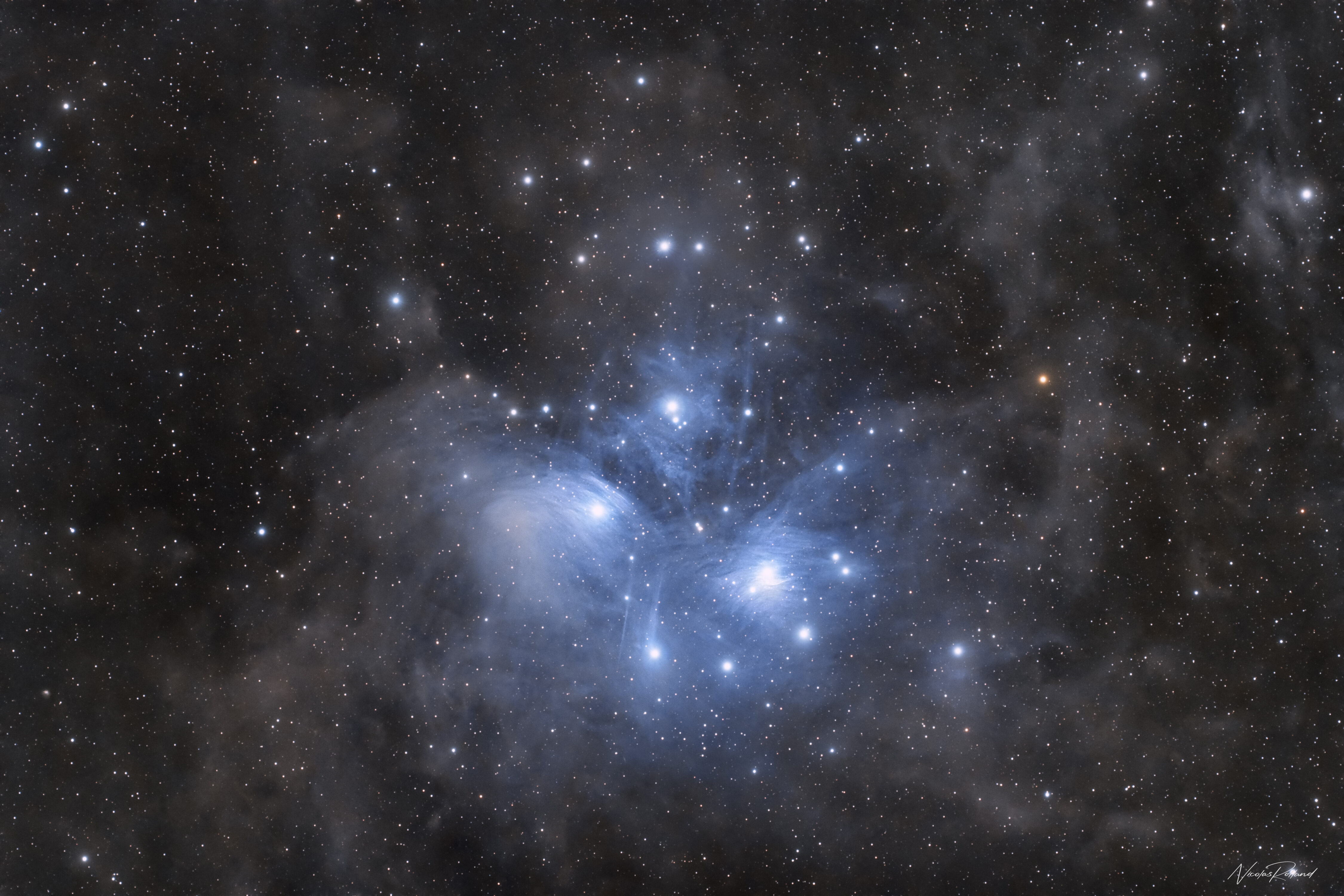The Pleiades & IFN
Messier 45
The Pleiades (Messier 45) is an open cluster (a local concentration of stars of common origin and bound together by gravity) in the Taurus constellation, about 100 million years old. It is one of the many nurseries of the Milky Way and one of the closest to the Solar System.
This cluster contains around 3,000 stars and extends over 2°; the equivalent of four times the apparent diameter of the Moon. It is estimated that the cluster should separate within 250 million years due to its low density. The cluster is composed of many types of stars. The brightest are blue giants (very hot), other stars are smaller and cooler than the Sun: red dwarfs brown dwarfs, white dwarfs… Many of these stars are binary systems.
The clouds of dust surrounding the stars correspond to reflection nebulae. In this picture, we can also see the IFNs (grayish colors), corresponding to Integrated Flux Nebulae lying beyond the main body of the galaxy.
As its name suggests, “Pleiades” comes from the seven sisters, daughters of Atlas and Pleione from Greek mythology: Maia, Electra, Taygete, Alcyone, Celaeno, Sterope and Merope. The nine brightest stars of the cluster take their names from the seven sisters and their parents.
Thanks David for sharing the raw data.
TECHNICAL DATA
ACQUISITION DETAILS
OPTICS ASKAR FRA400 @ F/5.6
CAMERA ZWO ASI2600MC Pro
MOUNT iOptron CEM70
FILTERS Optolong L-Pro (OSC)
LOCATION Rennes, Bretagne, Fance
DATE October 2022
EXPOSURES 5.5 hours (OSC 168 x 120 sec)
PROCESSING SOFTWARE Pixinsight, CCDstack, Photoshop
COPYRIGHTS David Khara & Nicolas Rolland

TARGET DETAILS
RA 03h 47m 02.9s
DEC +24° 05' 48.5"
SIZE 3.23 x 2.15 deg
ORIENTATION Up is 265 degrees E of N
CONSTELLATION Taurus
DISTANCE 444 ly
MAGNITUDE 1.6
